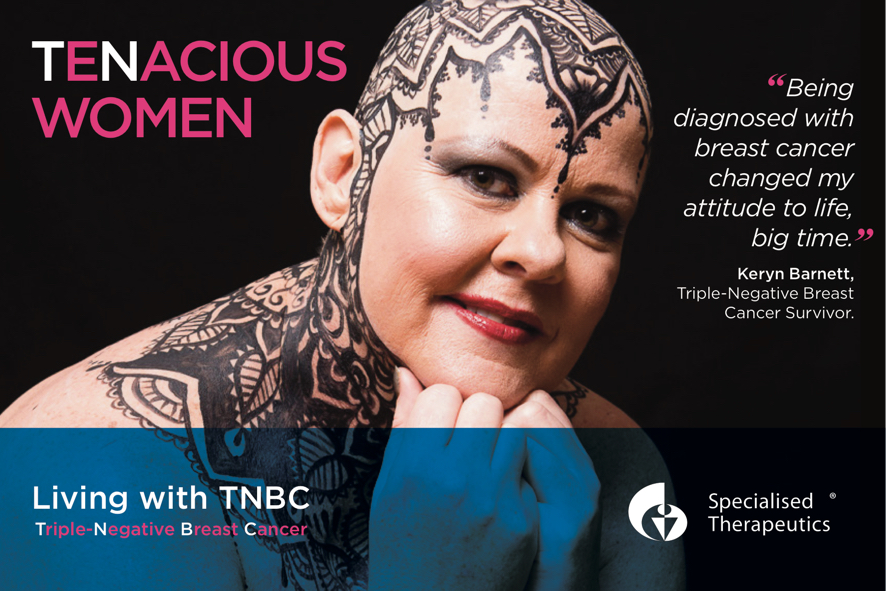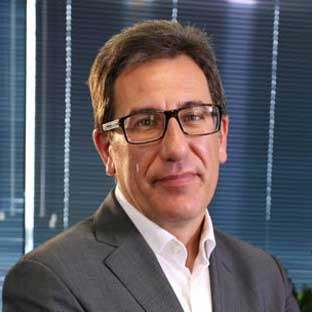Teresa Hammer is Living with Triple Negative Breast Cancer
Teresa Hammer was 48 years old, recently re-married and “the happiest I had ever been” when she was diagnosed with triple-negative breast cancer almost three years ago. Despite her devastating diagnosis, she has tried to remain positive. She is now in remission and continues to work, as well as babysit her 8 month old grandson, Jed.
She dreams of travelling “and more grandchildren!” She says now: “My grandson Jed has given me so much life and unconditional love. He has helped me heal.”
“I was 48 when I was diagnosed, through a general mammogram. My diagnosis came at a time when I was the happiest I had ever been. I was newly married again, with a wonderful husband. I also have two beautiful sons.
When I was told I had breast cancer, I was absolutely petrified and I felt very isolated. I remember it like it was yesterday. I thought, ‘How am I going to tell my family, my children?’ I knew it would just break their hearts and that was so hard for me to accept.
When they said it was triple-negative, I thought maybe it was not that bad. But then you learn more as you go along the journey. It was not in my lymph nodes, so that was a plus.
I worked all the way through my treatment, as many hours as I could. My job is in administration and I do a lot of commercial quotes for the flooring industry, so it is a customer service role. Having ‘chemo brain’ was so hard to cope with on most days. But my work colleges supported me, and made me feel most welcome at work.
I do believe that still being able to work kept me strong.
The treatment was really hard. I had beautiful long hair and I lost it, along with my fingernails, my toenails, my eyelashes – I lost every hair on my body. My teeth fell apart, so I had to have them fixed. My hair has grown back, but it is not the same hair. There is no curl. It is still very ‘chemo burned’ at the back and it came back quite grey.
My feet still get very tender. While going through the chemo my feet felt like I was walking on broken glass. When I finished the treatment, I thought that it had nearly killed me, so it must have done something!
I try to keep active and walk, to try and keep my body healthy. I have found that swimming has been my saviour to help with the soreness I still experience as a result of the treatment.
Having had triple-negative, you are always told there is a fair chance it will come back. So every night when I go to sleep I say a mantra. I say,
‘Cancer thank you for the visit, but you were never mine to keep.
Thank you for the beautiful people I have met, thank you for the treatment I have had and thank you for the lessons I have learned.
But you must never return in my body’.
It’s really important to share your stories because they can give hope to other people. When I was first diagnosed, I felt I was so different, because we were told triple-negative was less common.
But then I had a neighbour who told me his wife had been through triple-negative 20 years ago. When I heard she had survived, that gave me a lot of hope.
I would say to someone diagnosed today to cherish all of the good things.
My sister took six months off work to help support my husband and I. I will never forget what she has done; she is my world. She cooked dinner or cleaned the house so I did not have to worry about it.
My family helped out in the garden and took me to appointments when they could. I had great support from friends, my beautiful friends, and my hairdresser. My beautiful girlfriends would turn up with lasagnes or soups and just leave them on my doorstep.
Those things are the things you cherish. It gives you good energy to get you through.
Cancer has changed me. I was always a person that worried about things and stressed about things. Now I don’t. I have too much to live for, I have a beautiful husband, a beautiful family and a beautiful grandson. Jed is now eight months old and he is amazing. He is my reason for living. I have everything I need in my life to keep me strong.
I believe I am cured. But with cancer there is always that doubt.”
– Teresa shared her story in April 2017.


